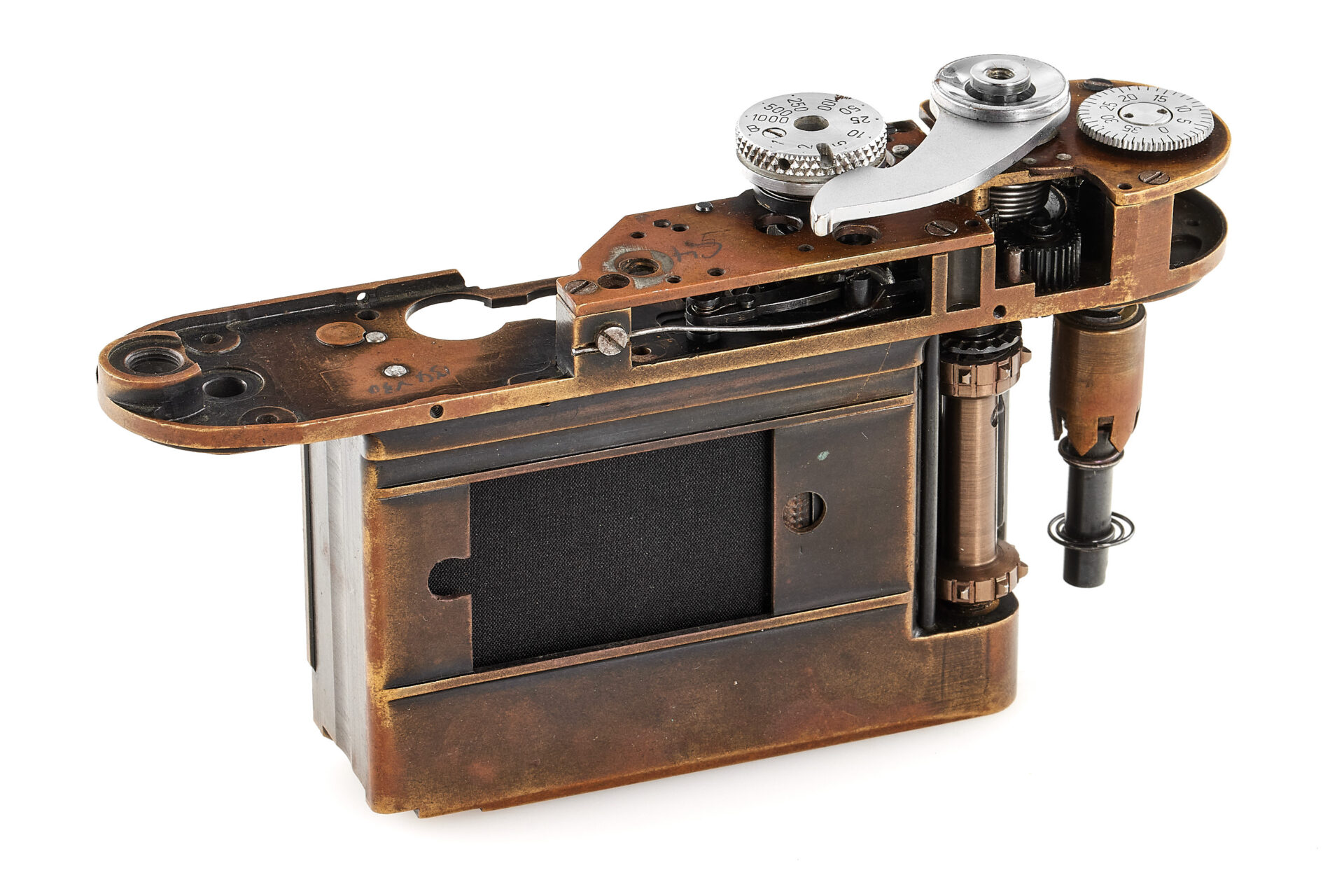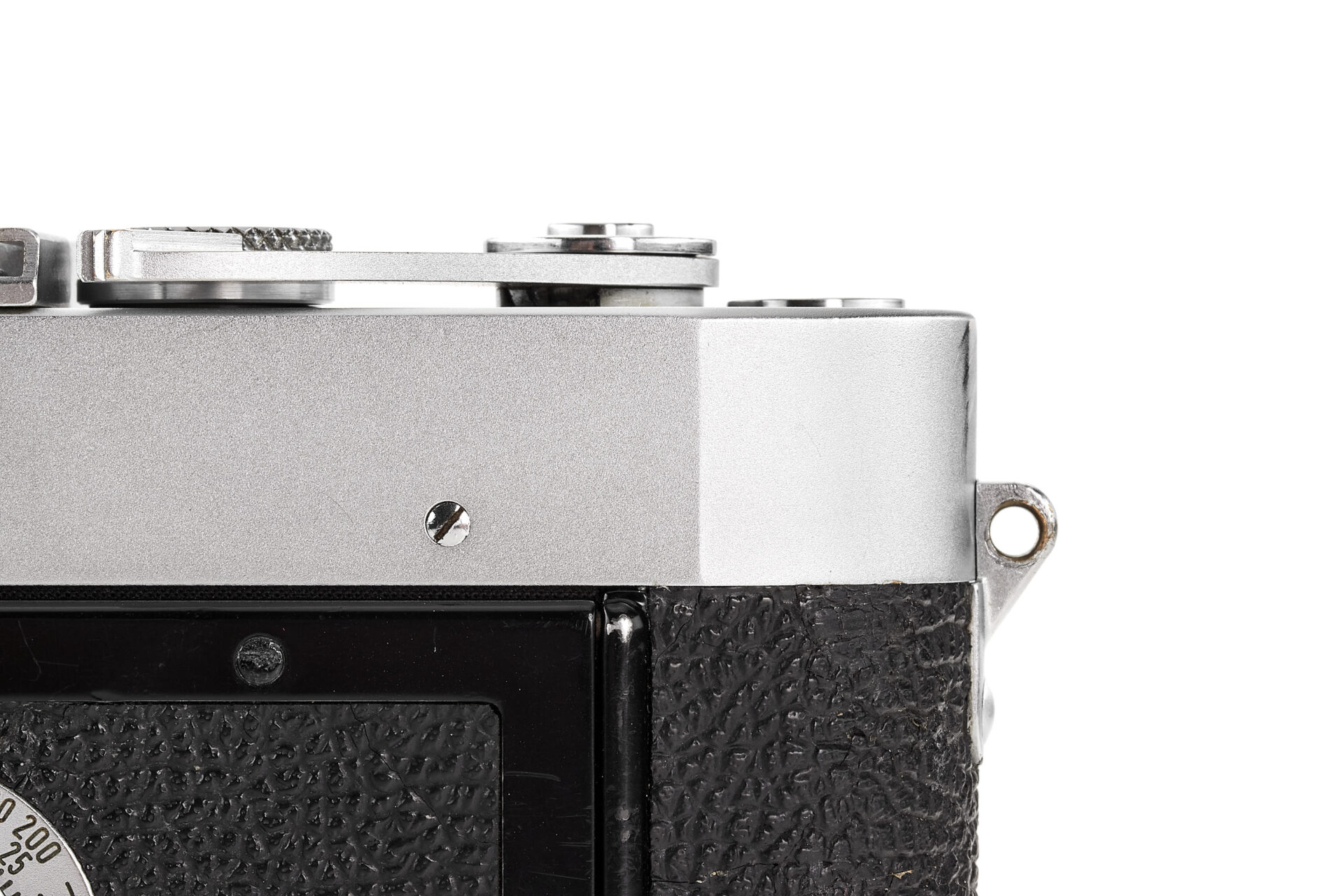Catalogues of the top auctions represent a remarkably efficient way of learning about the history of cameras and photography. The 45th Leitz Auction to be held in Vienna on 23 November 2024 is no exception, particularly in relation to Leitz/Leica items.
This year, the catalogue contains many items relating to the prehistory and early days of the now familiar M camera. It is a testament to its importance that it remains in production today, a full 70 years after its introduction as the M3 model at the Photokina Fair in 1954.
Indeed, the M has outlived the fair itself. In 1954, the new Leica M3 camera represented a revolution for Leica rangefinder cameras with its combined rangefinder and viewfinder with frame lines for different focal lengths.
It also had a bayonet lens mount, a rear door for easier film loading, the ability to use a light-meter, lever wind, and several other innovative features. Instead of going through the whole catalogue for the 45th Leitz Auction, in this article I will concentrate on the prototype and very early M models which are in the catalogue.
1. An early prototype
Some features of the eventual Leica M3 had appeared on prototypes in the 1930s, such as the flip-up rear door, the wind lever and the combined rangefinder and viewfinder. In this case, we have a very early prototype of the M camera from 1948/49. This is 2mm shorter than the final product launched in 1954, and it has ‘sharkskin’ vulcanite, which was in use at the end of the 1940s.
This camera has no serial number, but the most notable visual features include the external frame counter, not under a transparent cover as in the production version, and flat surrounds on the windows. The 3.5 cm lens has an unusual, angled slot which, it is presumed, was for the use of a set of goggles.
This very useful image shows the interior details of the camera with a glass pressure plate as in the early Ms
The camera has other features which are different from that released in 1954, and it comes with a prototype Leica-meter. This is a hugely significant item, and one of the reasons why the 45th Leitz Auction will attract such interest. Anyone toting a Leica M today is carrying the great, great-grandchild of this camera. I expect the bidding on this item to be very lively.
Lot No 76 Start Price €300,000 Estimate €600,000-700,000
2. The plastic model
This is a shape familiar to all Leica enthusiasts. It is a plastic model of the M shape from about 1948, and it is similar in dimensions to the previous item. Leica cameras always look very logical in shape, but someone, somewhere, and at some time, had to create that shape. This is also a significant historical item.
Lot No 77 Start Price €12,000 Estimate €24,000-28,000
3. Levers, levers, levers
For most Leica fans, the wind lever started in 1954 with the introduction of the M3, but Leitz/Leica had been working on the wind lever concept from the 1930s onwards. This lot consists of 12 prototype wind levers from the 1930s through to the early 1950s. It will be observed that some of these items are articulated, unlike the rigid lever on the production M3.
Lot No 78 Start Price €5,000 Estimate €10,000-12,000
4. Prototype collection
The next lot shows a wide variety of prototype camera chassis, some dating back to the 1930s, including 2 for the Leica IV, which had an integrated rangefinder and viewfinder, but still had screw mount and knob wind. Most are, however, lever wind prototypes for what became the M camera.
This lot includes a brass chassis for a Leica III, with nickel parts, from the early 1930s, which shows a combined single dial for adjusting shutter speed.
Perhaps the most unusual item is this aluminium chassis for the Leica IV, which had interchangeable finders for different focal lengths (not seen here).
Aluminium had been used in camera lenses and cameras since the late 19th Century, but it never became very popular at Leitz/Leica, which makes this quite an unusual piece.
The prototype chassis for the M models all have the familiar wind lever and the development of the now familiar features of the film Ms can be seen in these images.
This is a lot which contains a large amount of the history of the development of Leica cameras. For me, it’s a real highlight of the 45th Leitz Auction. If I could afford it and could win it, I would probably spend years working my way through the details which these items contain. To use an awful cliché, I sincerely hope that this lot goes to a ‘good home’.
Lot No 79 Start Price €150,000 Estimate €300,000-340,000
To finish, there are two very early M3s which contain many interesting details…
5. Number 43
This is Leica M3 serial number, 700043, and it comes from the very first production batch of M3 cameras made in 1954. This one is labelled as ‘Double Corner’. We are all familiar with the rounded corners of M camera bodies, but in the early days the cameras produced had some sharper corners, in this case front and back, which should be visible in the images below:
It is not just the unusual corners which make this item valuable, as early production/serial numbers are always sought after by serious collectors. The camera comes with a 5 cm collapsible Leitz Summicron lens, an early case, an unnumbered red box and an early M3 brochure from 1954.
Lot No 80 Start Price €60,000 Estimate €120,000-140,000
6. Leica M3 “One Corner”
The final item in my article is called a Leica M3 ‘one corner’.
This one is also from 1954 with a lovely serial number, 700444, and it shows the progression from the sharper corners to the rounded ones which we have known for many years. The sharp end is to be seen at the front, between the shutter button and the frame counter. The camera comes with a 3.5cm f3.5 M mount Summaron lens.
Lot No 81 Start Price €20,000 Estimate €40,000-45,000
I hope you are not too disappointed with my restricting myself to Lots 76 to 81, inclusive for the 45th Leitz Auction. There is always a history lesson lying within the pages of such auction catalogues, but, in this case, these six items form such a compact history of the early days of the M camera. I could not resist the temptation. This is particularly apt as Leica this year celebrates the 70th anniversary of its hugely successful M camera series.
The images in this article are, of course, courtesy of Leitz Auction. Auction No 45 will be held at 11am, Central European Time (CET) on Saturday, 23 November 2024. The full catalogue may be viewed here https://www.leitz-auction.com/en/Cameras/online-catalogue/ .
For the highlight results of this auction, see our article here
Read more from William Fagan
Auction coverage on Macfilos
More on classic cameras
Rangefinder lore
Film cameras
Join the Macfilos subscriber mailing list
Our thrice-a-week email service has been polished up and improved. Why not subscribe, using the button below to add yourself to the mailing list? You will never miss a Macfilos post again. Emails are sent on Mondays, Wednesdays, and Fridays at 8 pm GMT. Macfilos is a non-commercial site and your address will be used only for communications from the editorial team. We will never sell or allow third parties to use the list. Furthermore, you can unsubscribe at any time simply by clicking a button on any email.


















I feel pretty sure the results will be reasonable William, well not reasonable – but you know what I mean ! Chris. Williams.
Thanks, Chris. I hope you can see the sharp edges now.
William
Let’s see – three brand new Leica cameras or one plastic blob. Same money. Weighing the choice . . .
Not any old ‘plastic blob’, Martin. The comparison to be made is not just in terms of money or even utility, of course. The prototype M from 1948/49 will not take ‘better pictures’ than a production M3, but there are other reasons for the estimated value.
I’ll leave it at that.
William